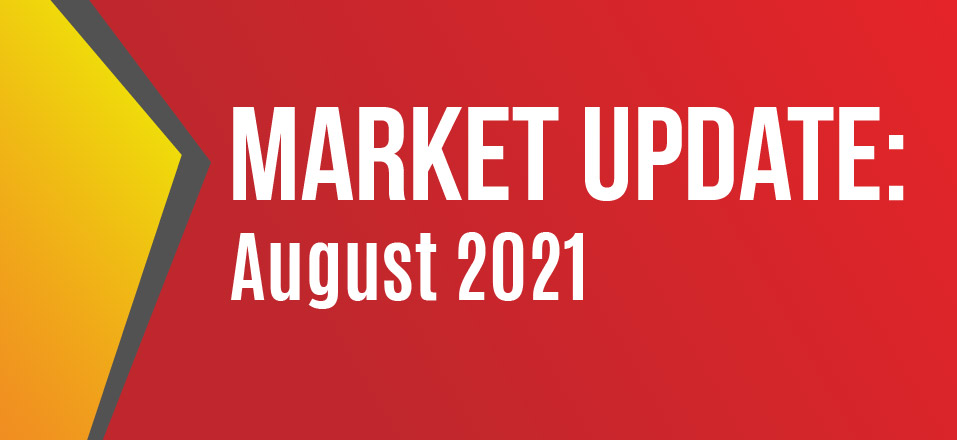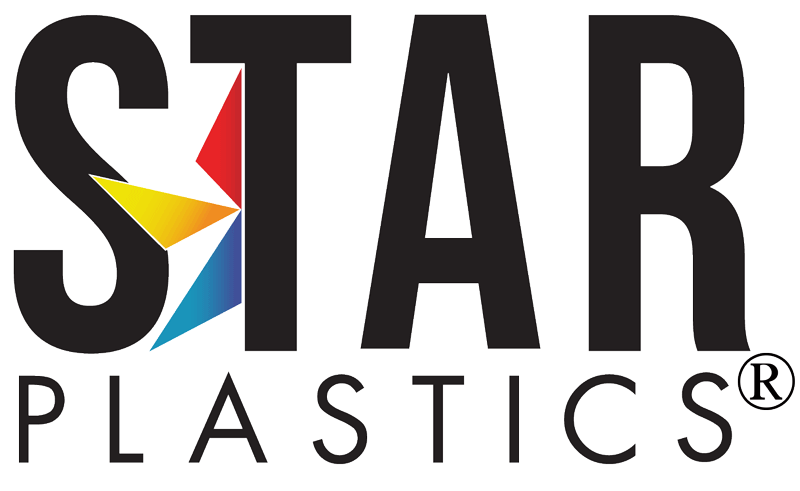News
Plastics Market Update – August

In August, we continued to see price increases, supply restrictions and lead time extensions on resins and additives alike. Interestingly, the shortages in virgin material supply have led to rising costs for recycled materials in the first half of 2021.
The rise of the delta strain of Covid have returned lockdowns in many parts of the world, piling on top of the ongoing challenges in logistics, labor, packaging, shipping, rail, and trucking for the plastics industry.
As producers continuously work towards rebuilding their stockpiles, the Atlantic storm season (Hurricane Ida, as a start) continues to threatens the goal of supply and demand rebalance.
Resin Prices Continue to Rise
PC
North American PC settled at 7 cpp increases for both Optical ($1.75) and GP (to $1.90), up 53 cpp year to date and stronger than predicted for August. Prices were also up in Europe and Asia, with operating rates high at 91% of capacity. Demand continues to be strong in key segments, including electrical which is up 17% over this time last year.
Inventories continue to be nonexistent, and lead times continue to be 16-18 weeks (meaning sales control measure also continue). BPA in Asia is also still short, with planned shutdowns for maintenance further limiting supply for the manufacturing of PC.
There is a hint of a decline in PC of 3 cpp for next month, but there is no evidence of that hitting the market just yet, and expectations through the end of the year are flat for pricing.
ABS
General Purpose ABS in North America showed an increase of 5 cpp in August ($1.63 for GP and $1.53 for extrusion grades). Like PC in Europe, prices were up, but pricing was reported down in Asia about 1.3% (200 RMB/ton).
The market in NA is expected to be tight, like for PC, through Q2-2022. Operating rates are high for ABS as well, at 94% capacity, with every pellet heading out into the market. The high operating rate means there are no preventative maintenance programs being completed so we’ll pay for this sometime in the future. Lead times continue to be 18 weeks with order backlogs beyond the supply capability. Production costs are also up 6cpp in August, which is a 30 cpp YTD increase.
A major supplier of ABS announced price increases mid-month, effective September 1st, on their standard ABS products by 8 cpp, citing increased costs of raw materials, strong market demand, and increased logistics costs associated with the manufacture and supply of those resins.
There are other shortages coming to the ABS market – FR, additives and pigments are all short and expected to be so through 2021. How long these shortages last into 2022 will be determined by Asian imports and whether or not any are directed to North America.
Nylons
Nylon 6 and 66 prices have continued to climb this quarter, up 10-20 cpp over the same period last year and up 30-35 cpp year to date. Supply continues to be tight and demand strong as automotive pushes more nylon use, on top of the continued demand from the E&E and appliance markets. We see no price decrease coming through the end of the year.
Regarding lead times, a large NA distributor of nylons also extended lead times to 3 months.
PBT
PBT held in price for August, staying flat for two whole months—though cash costs are now on the rise, so we expect a bump next month and possibly a few subsequent months. Imported PBT has been the life blood of supply recently coming from Asia heading into the compounding market, at 15-20 cpp less than domestic supply. However, that’s only if the logistics system and long lead times allow the material to flow into North America.
PP and PVC
Price increases were seen for thermoplastics across the board this month. North American PP demand remains strong from many end markets, and prices remained high—though didn’t increase in August like they had in May and June. PS prices followed the rise in benzene feedstock, increasing 8 cpp in August, though regional PS production is now running ahead of demand. PVC also moved up 2 cpp due to demand, specifically in the construction market which has been particularly strong in 2021.
Logistics
In mid-August, a terminal at Ningbo port, the 3rd largest port in the world, was shut down for two weeks after a worker was diagnosed with Covid. Vessels were rerouted to other China ports where congestion is already at a 7 year high. Recall that in Q2-21, a port in Shenzhen was shut down for a month due to Covid.
As a comment on the price of containers, the world’s largest container shipping line Maersk recently raised EBITDA expectations to 19.5B for 2021, up $6B from their original forecast of $13B.
Hurricane Season Begins
Hurricane Ida made landfall in New Orleans on August 29th (the 16th anniversary of Hurricane Katrina) as a category 4 hurricane. Initial reports indicated power outages throughout the eastern regions of Louisiana and as far north as Mississippi—it will take days to determine the extent of damage to the power grids and longer to restore electrical transmission to the region.
According to the IHS Markit Hurricane Update, more than 95% of the Gulf of Mexico’s oil production facilities had been shut down prior to Ida’s arrival, indicating the storm would have a significant impact on refineries. This includes PBF, Phillips, Shell, Marathon and two Valero refineries in the New Orleans area that accounts for 1.7M barrels per day of capacity or 9% of the nation’s total. Exxon, Placid and Kratz Springs in the Baton Rouge area are reported to be operating at reduced levels. The primary concern to the plants moving forward is power outages, as damages can’t be assessed until the power is restored (which may take 2-3 weeks). High water levels also leave many roads and rail lines inaccessible. Producers have not released timetables for potential restart.
Moving Forward
Uri in February of 2021 is still being used as the scapegoat, as it should be, for current market conditions. Demand was spiking up at that time, and supply was decimated by two factors: Asian importers redirecting material locally, and NA producers being shut down by Uri.
As we look forward, the National Oceanic and Atmospheric Administration (NOAA) is predicting another above-normal Atlantic hurricane season, predicting 13-20 named storms, of which 3-4 could be major hurricanes. With a big start so far with Hurricane Ida, the already-tight resin markets could see further tightness and higher prices. We reiterate the impact the industry still feels from Uri as the effects of Ida are currently unknown on the monomer production in the near term.
Unfortunately for plastic processors throughout NA, the resin-pricing relief we were hoping to see in the near future now seems further away.
You are our valued partner, and Star Plastics appreciates and values your business. Please email us at Sales@StarPlastics.com or contact your local Star Plastics representative with questions.



